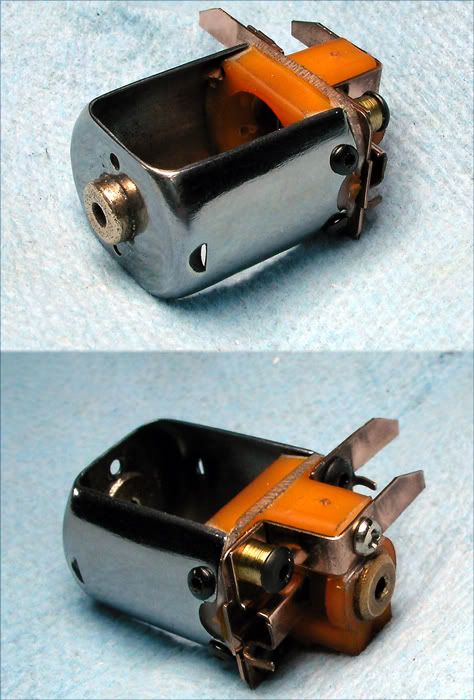Something that has come up in the past about home-winding is the whole subject of balancing...static vs dynamic. Without wanting to open up a whole can of worms, some things have become clear to me on this whole thing. The first is that, with practice and decent technique (as well as one of Rick/RGEO's beautiful balancing blocks), you absolutely CAN make a noticeable and significant improvement in how smoothly a motor runs. I think I'm pretty good at it and have seen the improvement many many times. It's also true that, as your winds get better and your motors run faster and faster...even tiny amounts of imbalance become more significant. When you start doing HOT motors, tiny imbalances become really significant and can lead to not just vibration, but also excess heat/arcing and ultimately premature motor failure. Imagine how, when a motor is spinning really fast and vibrating, the brushes (even with the com trued and a tight setup) will be bouncing off the com. The brushes being held in contact with the com by springs, are like tires on a car driving over rough terrain...bouncing and losing contact with the surface as the ride gets rougher. When the brushes "bounce" and the tiniest gap opens up for a microsecond...you get an arc jumping that gap. That arcing means heat and heat is a motor killer. You can, to a certain degree increase the spring tension to keep the brushes in contact with the com and do a good break-in to radius the brushes exactly to the com...but vibration will win in the end.
I've had some motors that were fairly "well-balanced" and in the end have to guess whether they're "good enough" for the wind. For sure an old Mabuchi #29 rewind will tolerate a little more imbalance than a Mura #25 and a Mura #25 will tolerate a little more than a modern strap motor. As the revs go up, the effect is multiplied and the forces acting on a big-wire arm when it's even a tiny bit out of balance must be crazy. So, for anyone doing rewinding (
that would include all 5 of us 
), when you get to a point where you can't get any better with static balancing and the arms you're doing are hot enough to really need "the best", it would pay to have someone who knows what they're doing balance the arm dynamically. I've taken the position in the past that static balancing is often "good enough" and sidesteps the issue of having to send every arm you wind out and that is often true, but it's also true that a good arm that's really spinning needs dynamic balancing to live a decent life. Find out who's doing it and what they charge and if they're recommended by others.
-john
PS...vibration is obviously not a good thing for the life of bearings and bushings...gears etc.
PPS: It's also easy to tell when an arm "needs" better balancing, just spin the arm up starting at low voltage

I don't recommend it, but I will often spin arms up no load all the way and as you increase the voltage and feel the vibration increase or "change" (because of harmonics) you may also get to a point near 12V where the motor doesn't seem to be spinning faster even as you apply the last couple of volts. Another clue is current draw. Hook up a well balanced motor and watch the current draw of the motor as it spins faster, then do the same with a motor that has an imbalance. Again, don't spin motors up all the way no-load...I'm just saying what I've seen.
PPPS: Arcing at the com will also leave a burned residue on the com that prevents good conduction of current, so not only will heat kill the motor but motor efficiency will drop as it's run over time.




 This topic is locked
This topic is locked










